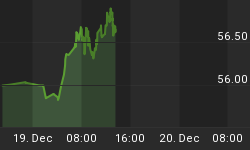In my last briefing I began to discuss two of three trends I want to cover in detail over the course of 2012 - pension solvency and EROEI. Today I want to examine the third trend which is water availability.
As people in the emerging economies make the transition to western standards of living there is a growing and overlooked issue - their water consumption will rise dramatically. The world's population is expected to increase 1.7 billion people by 2030 which at today's average per capita water consumption would require an additional 2,040 cubic kilometres of water per year. To place that number in perspective its approximately 24 Nile rivers. Let's examine the water needs of the two most populous emerging markets in more detail - China and India:
China (population - 1.3 billion): China has only 8% of the world's fresh water to meet the needs of 22% of the world's population. China is already facing shortages as water resources are 2,200 cubic meters per capita, 31% of the world average. By 2030, China's water resources are expected to drop to 1,760 cubic meters per capita - almost 25% lower than today. Seventy percent of the grain produced in China comes from irrigated land, but the country's irrigation supply is being depleted by urban water use; the depletion of underground aquifers; and pollution. At current crop prices, China's farms can't compete with factories for water. A thousand tons of water produces one ton of wheat, which has a market value of around $300, whereas the same amount of water used in industry might yield $14,000 of output - over 40 times as much. A 2001 Chinese groundwater study revealed that the water table under the North China Plain, an area that produces over half of the country's wheat and a third of its corn, is falling quickly. A World Bank study confirmed that China is mining underground water. By way of example, the shortfall in China's Hai basin is estimated at nearly 40 billion tons of water per year which means that when the aquifer is depleted, the grain harvest in this region will drop by 40 million tons - enough to feed 120 million people (1,000 tons water = 1 ton wheat). At the same time, Chinese non-irrigation water consumption is expected to increase by 75% by 2025 (over 1995 levels), leaving even less water available for irrigation and creating additional need to import food crops.
India (population - 1.1 billion): By 2025 urban water demand is expected to double and industrial demand to triple. India's 100 million farmers operate approximately 21 million wells. A 2005 World Bank study reported that 15% of India's food supply is produced by mining groundwater. Stated otherwise, 175 million Indians are fed with grain produced with water from irrigation wells that will go dry.
Obviously water is difficult to import - it currently has a low value to weight/volume ratio. Water is also a difficult commodity in which to invest directly. As it is much easier and cost effective to import water by proxy - by importing food - the solution is obvious. For investors seeking to invest in water demand the simplest route may just be to invest in wheat producing farmland in a country that is a net agricultural exporter. As the Canadian prairies have been massive net exporters of wheat for decades, they are effectively one of the worlds leading water exporters without anyone having given it much thought.
Regards















